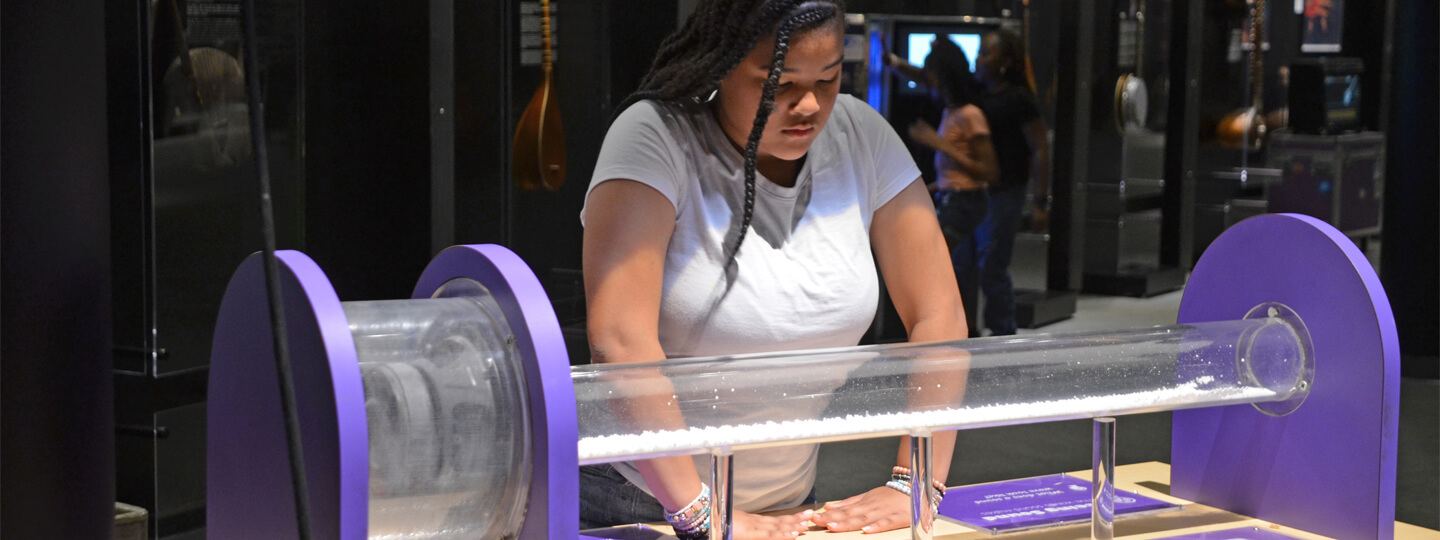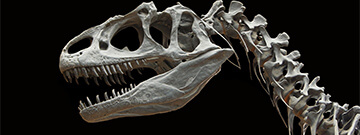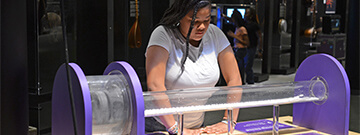
The Science of Sound
Waves lapping along the shore, a fly buzzing through the air, children laughing at the playground. We are surrounded by various sounds every day. Some of them, like our phone notifications or car horns, alert us of the world around us. Others, like music, help us connect with friends and enjoy our favorite song artists. When you listen to a song on the radio, or see your favorite band live in concert, the sounds you are hearing are in the form of waves. Not ocean waves, but sound waves.
Sound waves are made up of vibrating particles that collide with other particles, causing them to vibrate and collide with additional particles, and so on. The vibrations in the air cause our eardrums to vibrate, and these vibrations are transformed into nerve impulses that are delivered to our brains, allowing us to hear sounds. Microphones, likewise, sense air vibrations and convert them to electrical impulses. The particles that vibrate as part of a sound wave move back and forth along the sound wave’s axis. The movement causes places where particles are more tightly packed (high-pressure areas) and areas where particles are more evenly distributed (low-pressure areas). A longitudinal wave is the name for this particular kind of wave.
The amplitude and frequency are two crucial characteristics that influence how a sound, well, sounds to us. The volume of a sound is determined by its amplitude; sound waves with a larger amplitude are louder. The sound wave generated by a concert playing music to the audience, for example, has a larger amplitude than the sound wave produced by a person whispering to their friend. The pitch of a sound is determined by its frequency: a sound with a greater frequency has a higher pitch. A graph of a baby crying, for example, will appear much more bunched up than a graph of the booming sound of a growling lion.
Sound waves are all around us, but we recognize them most in music. If you want to learn more about the science behind music, check out the Science Center’s new exhibit: “GUITAR: the Instrument that Rocked the World.” You can learn even more about sound and how we make music, and you can get insight on the history of guitars.
Source:
“The Science of Sound.” NASA
“Sound Waves.” PASCO Scientific,
https://www.pasco.com/products/guides/sound-waves. ![]()
Scientific Peer Review by Alysia Mandato
Aneri Shethji:
Aneri Shethji is a 10th grader at North Allegheny Intermediate High School. She is very passionate about science and writing and enjoys getting involved with the community. In her free time, Aneri spends time with friends and family and loves getting outside. She can’t wait to learn more about all that science has to offer, and help others learn it too!

On April 8, 2024, we will witness a mesmerizing event. A total solar eclipse is upon us, and here at the Science Center, we can explore this celestial phenomenon in many ways.
But first, what is this event? A ...

Climate change is a big deal. We’ve all seen news stories about greenhouse gas emissions, rising temperatures, and the hole in our ozone layer. However, what tends to sometimes be overlooked is climate change’s ...

In the captivating world of health care, a fascinating transformation is taking place—a rise in Artificial Intelligence, or AI! Picture a world where smart machines team up with doctors to revolutionize medicine, making ...

Hydroponics, a contemporary farming method, redefines how we grow plants, offering a fresh approach to cultivating crops that differs from traditional soil-based farming. This innovative technique doesn’t rely on soil ...

In our solar system, the eight planets—Mercury, Venus, Earth, Mars, Jupiter, Saturn, Uranus, and Neptune—are talked about more than anything. While the ...

Quantum computers are on the forefront of technological advancement. These machines, unlike any traditional computers you’re familiar with, harness the ...

The Earth is a spectacle of constant movement. Periodically, it commands our attention with displays of power—earthquakes. These events are tied to the intricate movements of the Earth's tectonic plates. Tectonic ...

Have you ever wondered how investigators in crime shows manage to identify suspects with such accuracy? Dusting for fingerprints isn’t always feasible in many cases, so the true answer lies in a different type of ...

Writers: Evan Allen, Ricardo Aguilar, Jillian Pensenstadler, Amelia Foley, and Ian Lisien
Once a center of industrial prowess, Pittsburgh has undergone a remarkable transformation, ...

Have you ever questioned what happens to the food you consume? Prepare yourself for a thrilling voyage as we go through your digestive system! We'll look at ...

When someone falls on their arm, they immediately head to the hospital to see if it is hurt. X-rays are used by doctors to examine your bones more ...

Even though dinosaurs became extinct about 65 million years ago, we know quite a bit about them, including what they ate, where they lived, and even what ...



